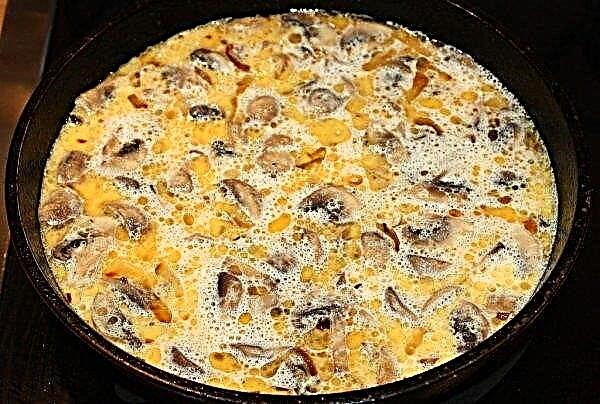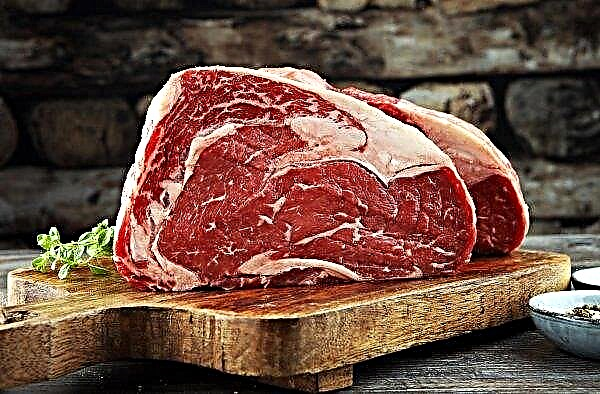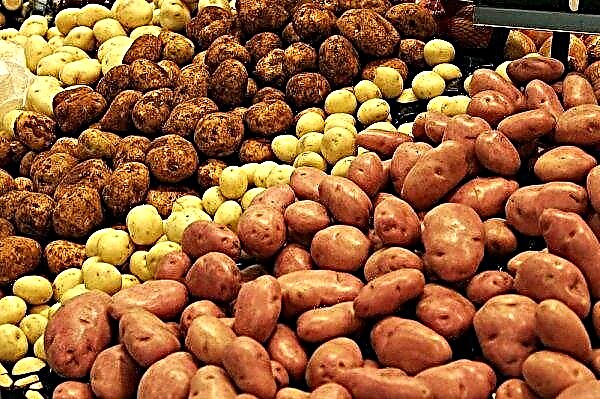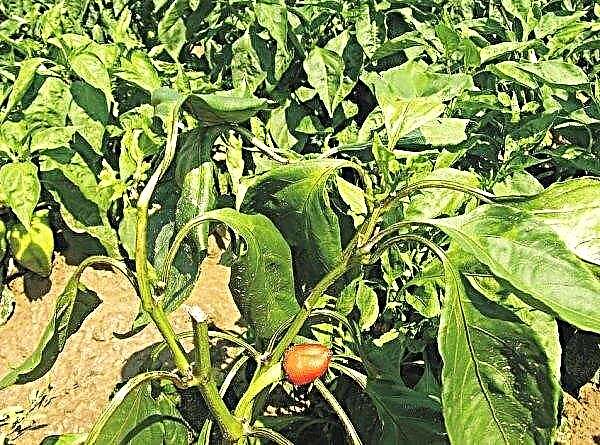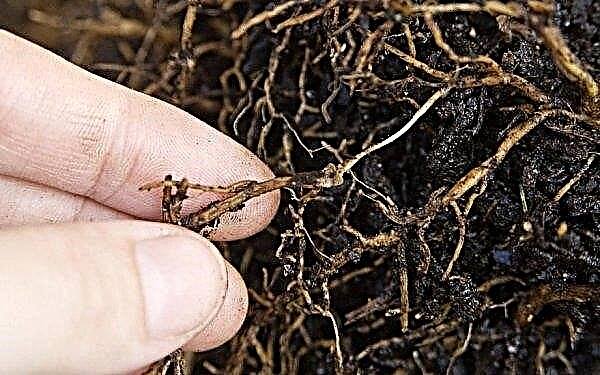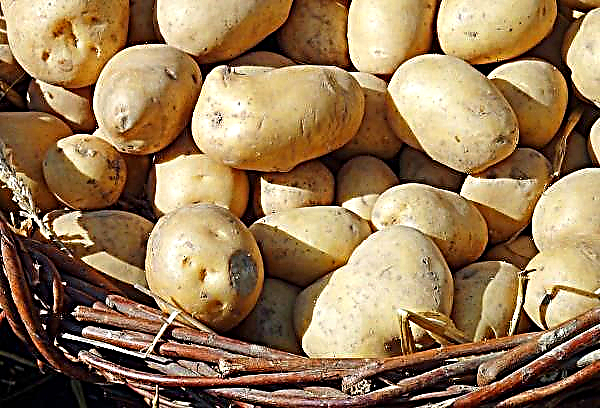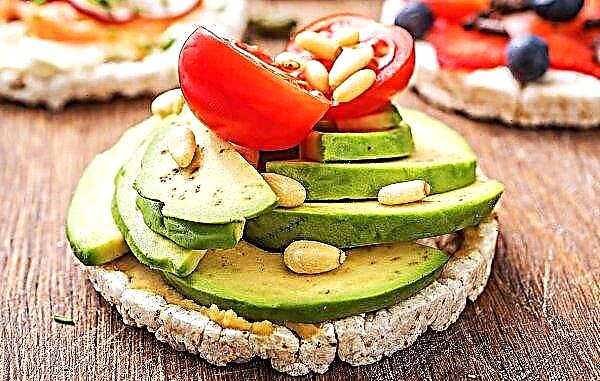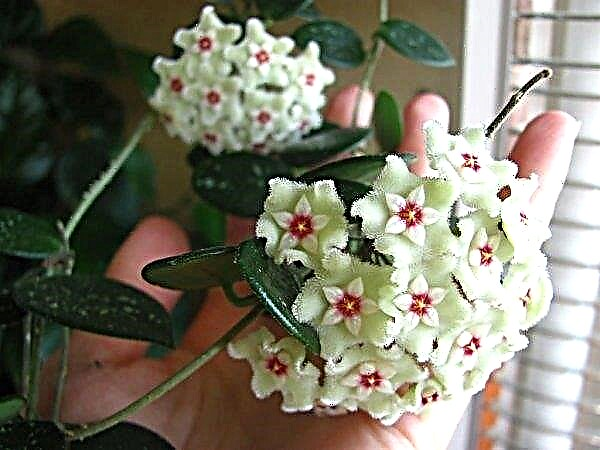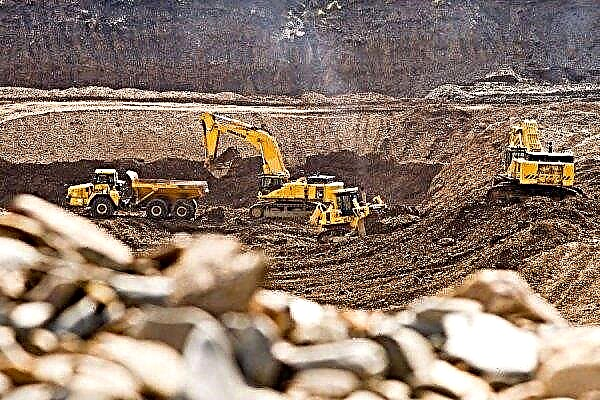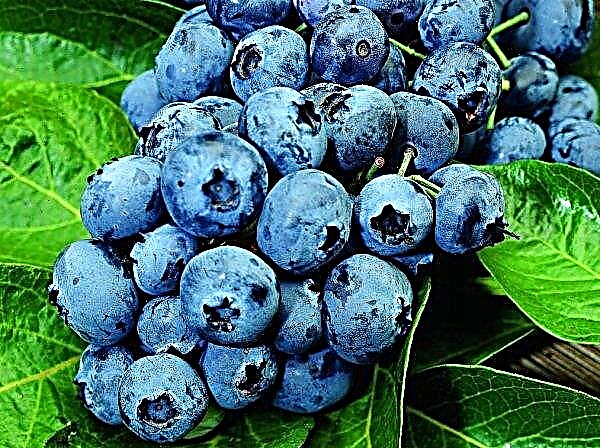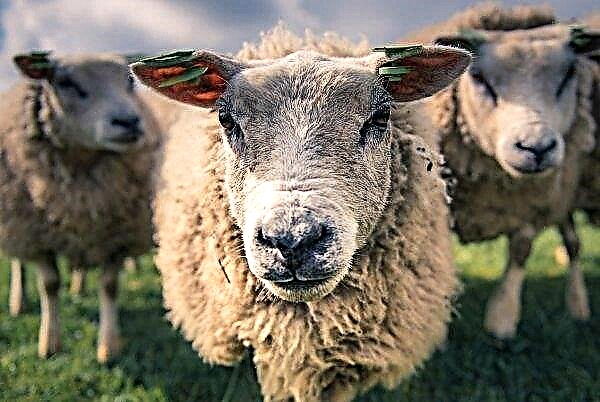Peking cabbage (it is also salad or petsai) is a frost-resistant vegetable crop that produces two crops for the entire warm season. Culture is valued among gardeners and housewives not only for its rapid growth, but also for its delicate taste and ability to long-term storage. Read about how to grow this cabbage, as well as the intricacies of caring for it in this article.
The origin and description of the culture
The birthplace of culture is China, and the first records of it date back to the 5th – 6th centuries. n e. Petsai cabbage quickly gained popularity in Korea, Japan, as well as in the countries of the Indochina peninsula (Vietnam, Laos, Cambodia, Thailand and others).
In the middle of the 20th century, on the basis of existing varieties, the Japanese created new varieties and hybrids with high consumer characteristics. On the European continent and in North America until the 1970s. culture was not successful among farmers. However, with the advent of fast-growing persistent Japanese hybrid forms, the cultivation of Asian beauty in Western countries began to experience a real boom.

Chinese cabbage is a two-year-old herbaceous plant (however, cultivation is more often practiced as an annual crop). Let us dwell on how the plant itself looks. The heads of cabbage are half-open, elongated, with a length of 30 to 60 cm.
The leaf plates are wrinkled, from light yellow to bright green, and the petioles are flat and wide, are white. Rosette and heads of cabbage collected from leaves are used for food purposes. On the palate, these parts are juicy, but tender, without a characteristic cabbage smell, therefore treats from this vegetable come out with a more refined taste and aroma.
Did you know? The well-known Korean kimchi is made from Beijing cabbage. For Koreans, this appetizer is the main guest on the table.
The main feature of Beijing cabbage is early maturity. There are varieties of early, middle and relatively late growing season. 40–80 days - this is how much this crop grows depending on the variety. This allows you to grow 2-3 crops in one season.
Typical early ripening forms are: Richie F1, Cha-Cha F1, Miss China, Little Miracle. Mid-season varieties include Orange Heart F1, Chill F1, Morilo Storido F1, and late-ripening species include Nick F1 and Turquoise F1. The crop yield is high - depending on the climate, care and variety can reach 90 tons per hectare or an average of 350 kg per one hundredth.
Is it possible to plant Beijing cabbage at home
Leafy vegetables can be obtained at home. If you live in Siberia, where the climate is very harsh, in your case it is more reasonable to cultivate cabbage in closed conditions. Of course, at home on the windowsill, the yield will not be as chic as under the open sky, however, the vegetable is perfect for adding to fresh salads.

First of all, decide on the variety - for a protected ground, a leafy type of early ripening is best suited. In order not to stumble on low-quality seed, buy seeds only from a trusted manufacturer. In this case, be sure to pay attention to the expiration date of the material.
Pots should be large so that there is enough space for the development of the rhizome. Plant care includes watering as the soil surface dries and top dressing.
Important! If the plant has a normal appearance and does not look weak, it is better not to resort to fertilizing. Pekingka is prone to the accumulation of harmful substances, which often enter the soil along with top dressing.
Properties of Peking cabbage
Next, we will figure out what is the usefulness of an Asian beauty, and find out if there are contraindications to her use.
Benefit
Presented herb is a source of vitamin A1, thiamine, riboflavin, pyridoxine, ascorbic acid, tocopherol, phylloquinone, nicotinic acid. Of particular benefit are the leaves, in their composition more than a dozen types of amino acids, protein, organic acids, sugars and mineral salts. Cabbage is low-calorie - 100 g of fresh product contains only 16 kcal.

- Among the mass of useful properties of a vegetable from China it is worth highlighting the following:
- stabilization of the heart and blood vessels;
- stress relief - a positive effect on the nervous system, strengthening sleep, normalizing blood pressure, helping to get rid of headache attacks;
- normalization of the gastrointestinal tract, regulation of metabolism;
- activation of the formation of red blood cells (consumption of Beijing can serve as a good prevention of anemia);
- lowering blood cholesterol;
- help in the fight against acne and maintaining a healthy complexion;
- an increase in the body's ability to absorb calcium, which is necessary for the formation of a strong skeletal system;
- increasing the body's defenses, providing a general therapeutic effect;
- relief from jaundice, hypertension, arthritis, rheumatism and oncology;
- Fresh leaf juice is useful in diseases of the gums and oral cavity.
Harm
Leafy vegetables are contraindicated in suffering from pancreatitis, heartburn, gastritis with high acidity, ulcers and enteritis. Nursing mothers should also follow the measure. Everything else must be cautious, consuming vegetables in reasonable quantities. Excessive intake of vegetables (whether fresh leaves or heat-treated vegetables) may cause diarrhea. Nausea and dizziness are also possible.
Despite the fact that Beijing cabbage rarely provokes an allergic reaction, do not rule out this point. Before consuming a vegetable, make sure that there are no allergic reactions on the part of your body.
Optimal landing times
There are some negative aspects to the cultivation of the culture presented, one of them is shooting (the appearance of flower stems). In order for the Beijing cabbage to form a full head out and not go off the arrow, it is important to know when to plant it more optimally.

This is possible only with a long daylight, so the most favorable time for landing:
- early spring period - April 15–20;
- summer-autumn period - from the beginning to the end of summer (preferably from July 20 to August 10).
Summer residents often also consider the option of winter sowing. Landing under the winter promises an early and generous harvest (10-12 days earlier). Seed material undergoes a good hardening in winter and quite hardy bushes are obtained from it.
Growing methods
Peking cabbage is obtained in seedlings and without seedlings (seeds). Check out the right cultivation technology so that your efforts are worthwhile.
Seedling method
The advantage of this method is to accelerate growth and shorten the time for ripening. We will immediately clarify the urgent question of whether it is possible to dive culture. Since Peking negatively responds to diving and adapts to a permanent place for a long time, it is preferable to grow it in separate pots or peat tablets.

Soil should be light, not acidic and enriched with nutrients. Use humus mixed with coconut substrate (1: 2); A mixture of turf land and peat in equal quantities is also suitable.
Consider the landing process in stages:
- Sow the seeds in a container with soil mixture to a depth of 0.5–1 cm. Leave the pots in a dark, warm room.
- After 2-3 days, when the shoots appear, the pots will certainly bring into the light.
- Irrigate seedlings only when the surface of the soil dries. 3-4 days before planting on the site, watering must be stopped.
- When the seedlings form 4-5 true leaves (about a month later), it must be transplanted to a permanent place in the garden.
Reckless method
Next, consider how to plant an Asian beauty without seedlings. This technology can only be used in well-lit areas where potatoes, carrots, cucumbers, onions or garlic previously grew. Regarding the temperature at which seeds can be sown, keep in mind that the seed sprouts already at 4 degrees above zero.

Landing is carried out according to the following scheme:
- Form depressions at a distance of 25–30 cm from one another (a similar distance is also necessary between the rows on the bed).
- Add 0.5 l of compost or humus to each groove, 2 tbsp. l of ash, then thoroughly moisten the wells.
- Plant seeds to a depth of 1-2 cm.
- Sprinkle ash on top and cover the plantings with covering material or film. The first sprouts appear after 4-6 days.
Important! Beijing cabbage can also be grown from the stalk that has sprouted. But this is not the easiest method. In addition, when using this method, hybrid varieties can give a good harvest only in the first year.
Features of the care of Beijing cabbage
Compliance with the intricacies of care will significantly increase the chances of getting attractive, solid vegetables.
Watering and feeding
Garden vegetables need abundant periodic irrigation - once a week with warm water. Pour water under the root to prevent it from falling onto the leaves. To prevent moisture from evaporating too quickly from the ground, regularly mulch the beds.

For the first time, you need to feed cabbage already 15 days after transplanting young plants into the open ground. The nutrient mixture should consist of organic matter (mullein or chicken droppings). Consumption - 1 liter of organic fertilizer diluted in water per bush. Throughout the growing season, fertilize plantings two to three times.
Foliar top dressing has a good effect on head formation: Dissolve 2 g of boric acid in 1 liter of hot water, then add another 9 liters of cold water. With this solution, process the cabbage on the leaves. Watering and dressing procedures are best done in the early morning or in the evening.
Did you know? According to Charles Darwin, all varieties of cabbage came from one wild-growing form. This indicates the amazing properties of cabbage to the formation of new varieties.
Often gardeners ask themselves whether Beijing cabbage should be tied. Since bushes often “shoot” without strapping and flower stalks grow out of them, this procedure must be started at the early stages of ripening. With the advent of folded leaves, immediately pick them up and tie them together using tape. As the bush grows, renew the strapping. Do this not tightly, but tightly so that the formation flows correctly.
Loosening and weeding the soil
Caring for the soil under the bushes includes loosening and removing weeds. Loosen aisles regularly, especially after rains and watering. The procedure will create a favorable air regime in the rhizome.

Use paws to control weeds. Before closing the rows, spend 2-3 interrow cultivations with lancet paws, first to a depth of 4-6, and then 6-8 cm.
Pest and Disease Control
If Peking cabbage does not tie heads, and holes appear on the leaves, then the plant is affected by the disease or insects eat it. Most often the culture is affected by the black leg, dry rot, white rot, mosaic, fusarium wilt, keel, black annular spotting, vascular bacteriosis, peronosporosis (downy mildew) and alternaria.
In the fight against fungal diseases, fungicides such as “Topaz”, “Quadris”, “Chorus”, “Ridomil”, “Skor”, “Fundazol” will help. It is impossible to cure bushes from viral ailments. Remove affected samples from the site and burn them.

Special attention should be paid to vascular bacteriosis, since this is a very dangerous disease that affects cabbage at all stages of development. Depending on the stage of the disease, the leaves of the cabbage gradually turn yellow; inside the head, the cabbage rots and turns black. It is necessary to combat vascular bacteriosis by removing the affected heads of cabbage from the bed and further treating the area with such preparations as Fitolavin-100, Trichodermin, Planriz.
Among the dangerous insects for Peking that can spoil a large number of crops: spring cabbage flies, wavy fleas, caterpillars, harmful centipedes, bears, sprout flies, wireworms, petioles, slugs, winter and garden scoops, gamma scoop, rapeseed bug and flower beetle , as well as cabbage moths, fire flames, dustpan, bug and aphids.
You can save yourself from harmful insects by spraying the garden with insecticides, and in cases with arachnid pests - insectoacaricides. The last treatment should be carried out no later than 30–35 days before harvesting.
Harvesting and storage methods
If two months have passed since the landing, you can safely remove the heads of cabbage. But do not remove the entire plant from the garden, as the cut leaf grows well again. Cut the ovary to six leaves - this Peking is used as a salad.
Adult plants are resistant to cold, so it is advisable not to rush with the cleaning of unripe small samples. It is permissible to keep the cabbage heads on the bed until frost on the soil. In the fall, before the air temperature drops sharply below zero, all the heads of cabbage must be collected from the garden.

The head of cabbage is ready for harvesting with roots (for long-term storage) at the moment when the leaves are closed at the top, and the vegetable itself has become dense and has reached a weight of 1 kg. Take away healthy, whole, resilient specimens for storage.
As for how to properly store the harvest, each head of cabbage should be wrapped in cling film or newspaper, then in a bag of cellophane and kept at a temperature of +5 ... + 7 ° С. If you use a newspaper, periodically change it to prevent rotting of vegetables.
Since cabbage is stored no longer than three months, do not stock up on vegetables for the whole winter. Eat cabbage until it is juicy, fresh and has not lost its valuable properties.
Now you know how good Beijing cabbage is and how to plant it properly. Taking on a few basic rules and tinkering a bit, you can grow pale green dense heads of cabbage in your own cottage. Vegetables can be consumed fresh, fermented in jars or added to various dishes.Important! Peking cannot be stored in the same place with apples. The latter secrete the substance ethylene, from which the cabbage leaves wither.

